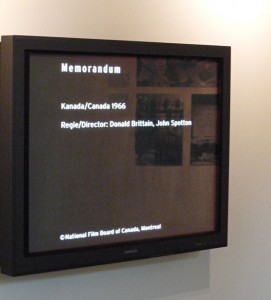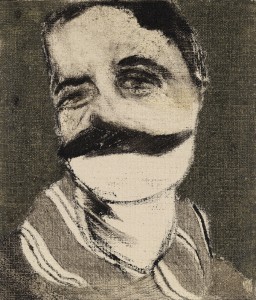Candy is a tricky matter for synagogues on Simhat Torah, the holiday celebrating the Torah and its yearly reading cycle. On this evening, the Torah scrolls are carried around the synagogue in festive processions and worshippers sing, dance, and throw sweets for children to collect.  In small synagogues, this procedure is fairly straightforward.
In small synagogues, this procedure is fairly straightforward.
But large synagogues can have issues with Milka-bars and Twixes flying through the air. To be fair, not many adults enjoy a barrage of caramels raining down on their heads, no matter the brand, no matter the degree of religious devotion. And to be very fair, bonbons thrown from synagogue balconies can be hazardous for the Torah scrolls, too. → continue reading
 A police siren blares through the last rooms of the permanent exhibition. The source of the alarming noise is a film excerpt being displayed on a large screen.
A police siren blares through the last rooms of the permanent exhibition. The source of the alarming noise is a film excerpt being displayed on a large screen.
This section of the exhibition is about the Frankfurt Auschwitz trial that took place from December 1963 until August 1965. Former SS members of the Auschwitz concentration camp authority were tried for murder or for aiding and abetting murder. The litigation is regarded as a turning point in the way the National Socialist past was dealt with in the new Federal Republic. → continue reading

R.B. Kitaj, Portrait of Aby Warburg, 1958–1962 © R.B. Kitaj Estate
R.B. Kitaj is known for his expressive, strongly-colored paintings and the retrospective at the Jewish Museum does these qualities full justice. Though for me personally, one of the most appealing works was at first unprepossessing. It is very small, barely 15 x 13 cm, in shades of grey – more a study than a painting. The Portrait of Aby Warburg (1958) depicts the pioneer of methodical iconography, who lived from 1866 to 1929. The son of a Hamburg banker, who passed on a career in the family business in order to become an artist and art historian, Warburg was an important inspiration for the painter Kitaj. Warburg studied the afterlife of ancient motifs in Renaissance art, an interest Kitaj shared insofar as he systematically quoted artworks from past eras in his own paintings. → continue reading
 In small synagogues, this procedure is fairly straightforward.
In small synagogues, this procedure is fairly straightforward.
